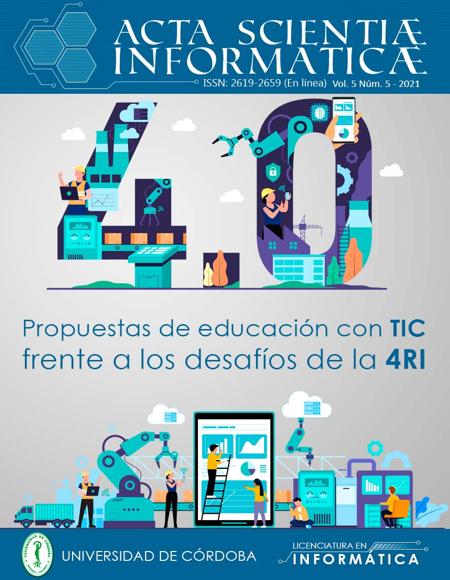Show authors biography
This article is based on the development of a monograph that carried out a review of works and projects related with the use of extended reality. The purpose of it was to explore the possibilities of mediation of extended reality as a learning tool. For this, we started from a conceptualization of the topic focused on the characterization of the subtypes of realities that make it up: mixed reality, augmented reality and virtual reality. In addition, the benefits in the extended reality education and its subtypes are established; besides, the differents technological tools that can be used for experimentation with these realities are specified. Finally, an analysis of the projects applied to education is carried out, where they mostly demostrated efficient results.
Article visits 586 | PDF visits
Downloads
- Aleksei, B., Arancibia, D., & González, A. (2017). Software educativo utilizando realidad mixta para la enseñanza del cuerpo humano.
- Beltrán, D. T. (n.d.). Uso de la Realidad Mixta/Híbrida para la Enseñanza de Animación. 1–30.
- Cadena, A., & Jos, P. (2020). Desarrollo de una herramienta didáctica basada en realidad extendida para un curso de física en ingeniería ambiental. 12(1), 202–214. https://doi.org/10.46571/JCI.2020.1.18
- Campos Soto, N., Ramos Navas-Parejo, M., & Moreno Guerrero, A. J. (2019). Realidad virtual y motivación en el contexto educativo: Estudio bibliométrico de los últimos veinte años de Scopus. Alteridad, 15(1), 47–60. https://doi.org/10.17163/alt.v15n1.2020.04
- Chuah, S. H.-W. (2019). Why and Who Will Adopt Extended Reality Technology? Literature Review, Synthesis, and Future Research Agenda. SSRN Electronic Journal, 2018. https://doi.org/10.2139/ssrn.3300469
- Çöltekin, A., Lochhead, I., Madden, M., Christophe, S., Devaux, A., Pettit, C., Lock, O., Shukla, S., Herman, L., Stachoň, Z., Kubíček, P., Snopková, D., Bernardes, S., & Hedley, N. (2020). Extended reality in spatial sciences: A review of research challenges and future directions. ISPRS International Journal of Geo-Information, 9(7). https://doi.org/10.3390/ijgi9070439
- Divekar, R. R., Drozdal*, J., Chabot*, S., Zhou, Y., Su, H., Chen, Y., Zhu, H., Hendler, J. A., & Braasch, J. (2021). Foreign language acquisition via artificial intelligence and extended reality: design and evaluation. Computer Assisted Language Learning, February. https://doi.org/10.1080/09588221.2021.1879162
- Doolani, S., Wessels, C., Kanal, V., Sevastopoulos, C., Jaiswal, A., Nambiappan, H., & Makedon, F. (2020). A Review of Extended Reality (XR) Technologies for Manufacturing Training. Technologies, 8(4), 77. https://doi.org/10.3390/technologies8040077
- El-Jarn, H., & Southern, G. (2020). Can co-creation in extended reality technologies facilitate the design process? Journal of Work-Applied Management, 12(2), 191–205. https://doi.org/10.1108/jwam-04-2020-0022
- Fernández García, C. E. (2017). Neuroeducación en entornos de realidad aumentada. Temática Psicológica, 13(1), 43–50. https://doi.org/10.33539/tematpsicol.2017.v13n1.1305
- Kim, S. K., Lee, Y., Yoon, H., & Choi, J. (2021). Adaptation of extended reality smart glasses for core nursing skill training among undergraduate nursing students: Usability and feasibility study. Journal of Medical Internet Research, 23(3), 1–12. https://doi.org/10.2196/24313
- Logeswaran, A., Munsch, C., Chong, Y. J., Ralph, N., & McCrossnan, J. (2021). The role of extended reality technology in healthcare education: Towards a learner-centred approach. Future Healthcare Journal, 8(1), e79–e84. https://doi.org/10.7861/fhj.2020-0112
- Mitter, M. (2020). Extended Reality in Education. October.
- McGuirt, J. T., Cooke, N. K., Burgermaster, M., Enahora, B., Huebner, G., Meng, Y., Tripicchio, G., Dyson, O., Stage, V. C., & Wong, S. S. (2020). Extended reality technologies in nutrition education and behavior: Comprehensive scoping review and future directions. Nutrients, 12(9), 1–14. https://doi.org/10.3390/nu12092899
- Rivera Castillo, F. S. (2021). Estrategias en el manejo de recursos didácticos virtuales de realidad aumentada, para desarrollar competencias digitales en docentes de educación general básica superior. Repositorio Digital Universidad Técnica Del Norte. http://repositorio.utn.edu.ec/handle/123456789/11627
- Sabogal, O. (2018.). HoloMuseo : Aplicación de realidad mixta con contenido multimedia desacoplado.
- Yang, K., Zhou, X., & Radu, I. (2020). XR-Ed Framework: Designing Instruction-driven andLearner-centered Extended Reality Systems for Education. http://arxiv.org/abs/2010.13779


